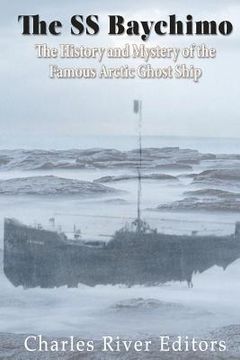The SS Baychimo: The History and Mystery of the Famous Arctic Ghost Ship (en Inglés)
Reseña del libro "The SS Baychimo: The History and Mystery of the Famous Arctic Ghost Ship (en Inglés)"
*Includes pictures *Includes accounts of the ship's journeys and its life as a ghost ship *Includes online resources and a bibliography for further reading By the early decades of the 20th century, the fur trade had tapered off some from its heyday in the 19th century, but it still proved profitable enough for hunters to live for months at a time in remote regions of Alaska. Their only contact with the outside world consisted of the company ships that came to buy their furs and bring them supplies. One of these vessels was the steamer Baychimo, a Hudson's Bay Company ship that plied the treacherous waters off Alaska, Arctic Canada, and Siberia for many years, supplying remote outposts of Inuit and Anglo trappers and bringing back their catch of furs. Her sailors were experts at handling Arctic waters, but one year the weather proved too much for them. In October of 1931, the Baychimo was carrying $1 million in furs for the Hudson's Bay Company when it was trapped by early winter pack ice in the Beaufort Sea. Ice is a powerful force of nature that can crush even the strongest of ships, so the captain had no choice but to order his crew of 14 men to unload all equipment essential for their survival and abandon the Baychimo. The cargo was too valuable to give up, however, so they retrieved lumber from the ship's carpentry stores with which to build a small house on the nearby ice. The captain hoped the ice would shift and free his vessel, at which point they could use one of the lifeboats to row back to the Baychimo and steam back home. In the worst-case scenario, they would have to spend the winter on the ice and wait for spring thaw. They wouldn't be the first Arctic crew to have done that. The Hudson's Bay Company airlifted out part of the crew, while the captain and remaining sailors hunkered down for a long wait, hoping the ice would break apart soon. Nature had other ideas. On November 24, a month into their vigil, the crew had to hide inside their makeshift home as a fierce windstorm howled over the bleak icescape. However, when they could finally emerge into the daylight, they saw their ship had disappeared. An Inuit reported the Baychimo had drifted some 45 miles south and was once more trapped in the pack ice. The crew followed his directions to their wayward vessel, removing part of the cargo of furs. They presumed their ship would soon sink in the ice, so they trudged across the frozen wasteland back to civilization. It must have been an epic journey, but the Baychimo had started on an even greater one; the ship was still afloat, and began to travel with the currents. Inupiat hunters spotted it south of Barrow, and the following spring, a trapper found it trapped in the ice on the Beaufort Sea. He hadn't heard of the missing ship, and being curious, he boarded it. When he discovered it was a ghost ship, he left. The ghost ship continued to be sighted in the region for years afterwards. In August of 1932, a group of Alaskan traders boarded her, exploring the abandoned galleys and cabins before leaving. The following March, a group of Inuit boarded her and got trapped for 10 days when a freak storm blew up. The last known boarding of the Baychimo occurred in November of 1939, when Captain Hugh Polson went aboard with the intention of salvaging her. He was soon driven off by encroaching pack ice. The Baychimo continued to float in the waters between Alaska and Siberia, mostly in the Beaufort Sea. The latest confirmed report was by some Native Americans in 1969, between Barrow and Icy Cape, almost four decades after it had been lost. It's remarkable that it survived storms, pack ice, and encroaching rust after all that time. While it presumably sank sometime in 1969 or shortly thereafter, since it had been regularly reported up to that point and no reports exist after that final sighting, some believe the Baychimo still plies the Arctic waters somewhere.

